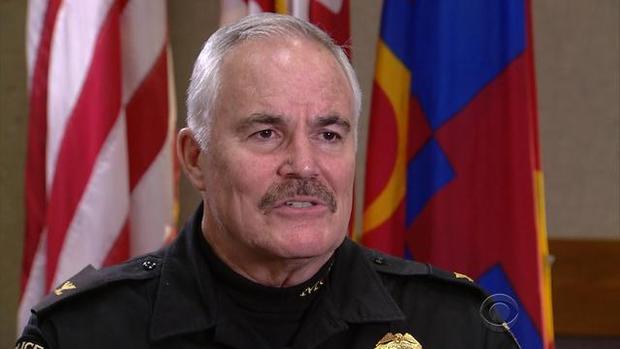As in any mass shooting, law enforcement is looking for clues that could help prevent the next attack.
Police in Hamilton, Ohio, are training for the next active shooter situation, CBS News’ justice and homeland security correspondent Jeff Pegues reports.
Columbine, Aurora, Newtown and Las Vegas have all taught investigators that it is important to move fast. But they’ve also learned that it’s difficult to predict who will be the next shooter.
“We’ve yet to find this checklist of red flags or indicators that is really, I think, detailed enough and sophisticated enough for us to say, ‘OK, we need to worry about, you know, this individual, because he meets, you know, so many of these criteria,'” said Tom Manger, the president of the Major Cities Chiefs Association.
Most active shooter situations occur in less than five minutes.

Tom Manger
CBS NEWS
An FBI report says 70 percent of the time, they happen in either a business or educational environment and, with less frequency, in open spaces, government properties and houses of worship.
Former FBI agent Katherine Schweit, who co-authored the study, said seeing the warning signs is key to preventing the attacks.
“So they get fixated on something?” Pegues asks.
“They get fixated on something, that’s one thing, with regard to an idea, whether it’s anger over a spouse or anger over an employer, or a particular political position, that fixation, and it grows and it strengthens,” Schweit said.
As much as police try to adapt their tactics, they know there is a limit to what they can stop.
“If there was a perfect way to prevent these things, I’m sure that we would have already implemented that,” Manger said.
Because active shooter situations often unfold before police arrive on the scene, law enforcement officials emphasize that it is important to be aware of your surroundings and pay attention to where the exits are.
© 2017 CBS Interactive Inc. All Rights Reserved.
